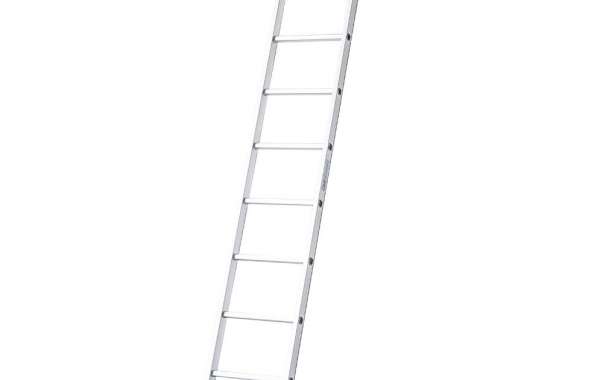The safe operation of a single ladder begins with a thorough pre-use inspection. Before climbing, the user should examine the entire ladder for any signs of damage. This includes checking the side rails for cracks or bends, ensuring all rungs are secure and undamaged, and verifying that the feet are intact and provide a solid grip. For a fiberglass single ladder, the inspection should include looking for any cracks in the surface, while a wooden single ladder should be checked for splinters or rot. Using a compromised single ladder significantly increases the risk of an accident.
Proper setup is the most critical step in ensuring stability. A single ladder must be placed on a firm, level surface. If the ground is soft or uneven, a large, stable board can be used under the ladder's feet to create a level base. The ladder should be leaned against a sturdy surface that can support the load, and it must be positioned at the correct angle. A good rule for a single ladder is the "four-to-one" rule: for every four feet of ladder height, the base should be one foot out from the supporting wall. This angle provides a stable balance between the ladder leaning too steeply or too shallowly.
Climbing and working on a single ladder require attentive practices. Always maintain three points of contact—either two hands and one foot, or two feet and one hand—while ascending, descending, or working from the ladder. This practice promotes stability. Users should face the single ladder at all times and avoid overreaching; your belt buckle should remain within the ladder's side rails. Moving a single ladder while standing on it is hazardous; it is always safer to descend and reposition the ladder to reach a new area. Furthermore, never stand on the top three rungs of a single ladder, as this makes balance difficult.
Regular maintenance extends the safe service life of a single ladder. After use, it should be cleaned of any dirt, paint, or other substances that could hide damage or make the rungs slippery. A single ladder should be stored in a dry, cool place, away from direct sunlight and moisture. Wooden ladders may occasionally require a protective sealant, while aluminum and fiberglass ladders can be cleaned with mild soap and water. By adhering to these inspection, setup, operational, and maintenance guidelines, a user can confidently rely on a single ladder as a safe and effective tool for years.







